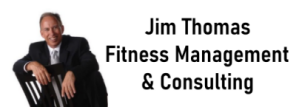Having access to a business line of credit is essential for any entrepreneur or a small business owner. Providing you with the funds needed for operating expenses, purchasing materials, and funding projects. But securing a business line of credit isn’t always easy. In fact, it can be a complex process. Especially for a smaller business with less financial history or capital.
However, with the right knowledge and preparation, securing a line of credit can be much easier than you think!
In this guide, we’ll explain how secured lines of credit work and why they’re important for businesses. Along with the steps you need to take to secure one for your own company.
How Does a Secured Line Of Credit Work?
A secured line of credit is a type of loan that’s backed by collateral like real estate, savings, or investments. This provides the lender with the assurance that the debt will be paid back. The borrower pays an annual fee for access to the line of credit while making regular payments on any amounts borrowed. Borrowers are usually required to provide a personal guarantee in addition to pledging their collateral. Which serves as security against defaulting on the loan.
They also generally come with more favorable terms than other types of credit. In part due the risk to the lender being lower if they repossess and liquidate pledged assets. It also offers flexibility since borrowers can draw up funds as needed. Making it an attractive option for entrepreneurs and small businesses looking for working capital.
Secured Business Line Of Credit Vs Unsecured Business Line Of Credit
Business Lines Of Credit exist in both Secured and Unsecured variations. A Secured Business Line Of Credit requires the borrower to put up collateral, as a guarantee for repayment. This type of loan is less risky for the lender since they have some form of security in case the borrower defaults on the loan.
On the other hand, an Unsecured Business Line Of Credit does not require collateral. Instead it relies more on a business’s creditworthiness and financial standing. The lender takes on more risk with this type of loan since there is no collateral to back it up.
Both types of loans provide businesses with access to money that can be used for any business expense that arises. However, unsecured lines of credit typically come with higher interest rates than secured lines of credit due to the increased risk taken by the lender. It is important for businesses to carefully consider both options before deciding which one is best suited for their needs.
Is It Hard To Secure a Business Line Of Credit?
Securing a business line of credit can be difficult since lenders have to assess the financial risk associated with the loan. The lender must judge the ability of the borrower to pay back the loan and their capacity to meet future obligations.
Factors such as a lack of collateral, unsteady cash flow, or inconsistent credit history can all lead to denial or unfavorable terms when applying for a business line of credit. In some instances, businesses may need to demonstrate sufficient and consistent income, pledge collateral or personal guarantees, or present additional financial statements and documents before being approved for a loan.
How to Secure a Business Line Of Credit: A Step-By-Step Guide
To help you acquire the financial resources you need, here’s a comprehensive guide to help get started:
- Understand your needs and objectives: Before applying for a loan, it’s important to have a clear understanding of how much money you need and why. Have an estimate of what expenses the loan will cover and make sure there are realistic repayment plans in place.
- Research lenders: Do some research on various lenders to determine which one is right for you and has the best terms. Consider both secured and unsecured lines of credit when conducting your research so you can compare offers from different lenders.
- Prepare supporting documents: To get approved for a loan, most lenders will require proof that you can pay back any money borrowed from them. Gather income statements, financial statements, and other documents needed to apply for the loan successfully.
- Apply for the loan: Once your documents are in order, it’s time to start applying for the loans you are interested in – follow each lender’s instructions carefully during this process so your application doesn’t get delayed or denied due to incorrect information or missing paperwork!
- Negotiate repayment terms if necessary: If your application gets approved, many lenders offer repayment plans tailored specifically to their borrowers’ needs and circumstances – so don’t be afraid to negotiate these terms before signing on the dotted line!
- Monitor usage/payments closely: After securing a business line of credit, be sure to monitor usage and payments closely so that you stay within budget and always pay back funds on time!
Tips for applying in 2023
Here are some tips and tricks for applying for a line of credit in 2023:
- Look around. Before applying for any type of loan, it’s important to compare shops so you can find the best interest rate and payment terms. Be sure to look at both secured and unsecured lines of credit when conducting your research.
- Know your finances. To get approved for a line of credit, lenders will want to see proof that you can repay any money borrowed from them. When applying for a loan, make sure you know your current financial standing and be prepared to provide income statements and other documents when necessary.
- Have collateral ready. If you are applying for a Secured Line of Credit, make sure you have collateral ready to back up your application. This could include real estate investments, savings accounts, or any other asset that is accepted by the lender.
- Get creative with repayment plans. Many lenders offer repayment plans tailored specifically to their borrowers’ needs and circumstances – so don’t be afraid to negotiate these terms before signing on the dotted line!
Using a line of credit wisely can help business owners take advantage of unexpected opportunities while also keeping track
Conclusion
Securing a business line of credit is an important step for businesses that need to access funds quickly and efficiently. With the right research, preparation and understanding of your financial needs, securing a loan can be made much simpler. To ensure success in securing a business line of credit, it’s essential to compare lenders, have collateral ready if necessary, understand your current financial standing and get creative with repayment plans when negotiating terms. Follow these steps to make sure you are taking full advantage of all available opportunities while also keeping track of usage and payments closely.
Click here for more details on financing options or call 214-629-7223 or email jthomas@fmconsulting.net for more information. Or, apply now.
An Outsourced CEO and expert witness, Jim Thomas is the founder and president of Fitness Management USA Inc., a management consulting, turnaround, financing and brokerage firm specializing in the gym and sports industry. With more than 25 years of experience owning, operating and managing clubs of all sizes, Thomas lectures and delivers seminars, webinars and workshops across the globe on the practical skills required to successfully overcome obscurity, improve sales, build teamwork and market fitness programs and products. Visit his Web site at: www.fmconsulting.net or www.youtube.com/gymconsultant.






